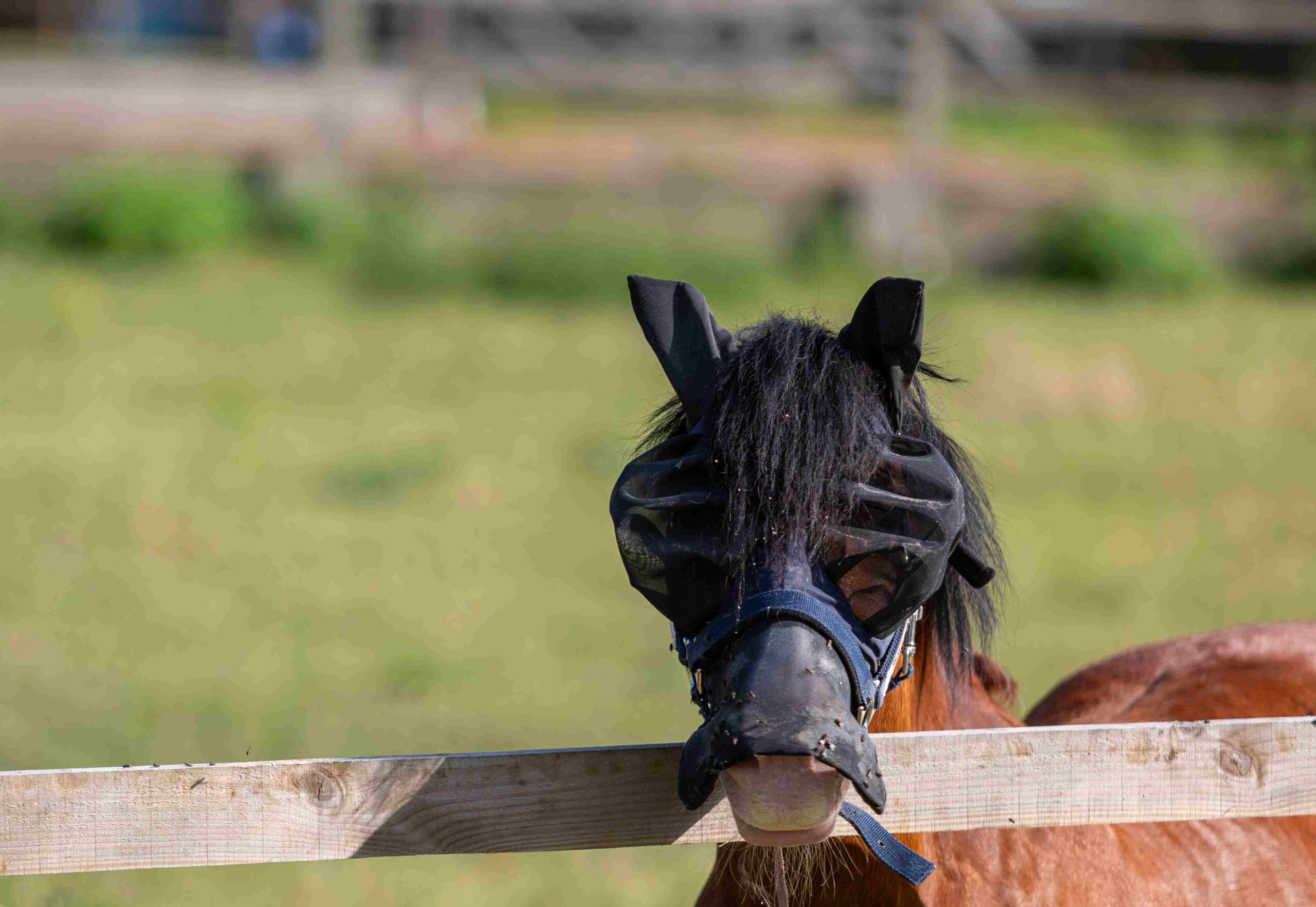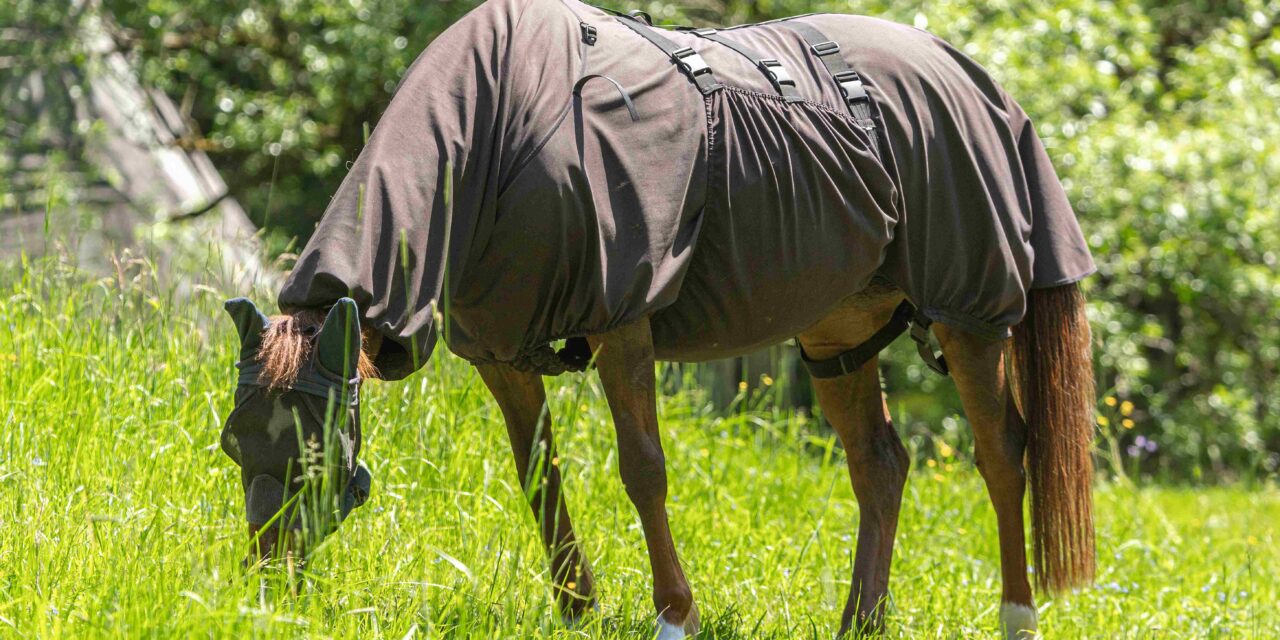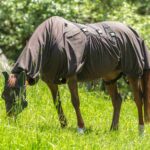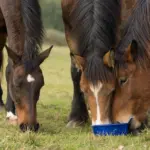When insect protection is truly necessary – and how to find the perfect gear
Key Points at a Glance
- Needs assessment: Not every horse requires a fly sheet – individual factors determine whether it’s necessary
- Fit is crucial: Poorly fitting sheets can do more harm than good
- Material makes the difference: Weigh breathability against protective effectiveness
- Safety first: Choose tear-resistant designs that still allow for emergency release
- Multiple sheets needed: Spare sheets are essential for hygiene and continuous use
- Consider alternatives: Sometimes fly sprays or changes in management are the better choice
Fly sheets have become a common feature in modern stables, but not every horse actually needs this type of protection. The decision for or against using a fly sheet should be carefully considered, as incorrectly applied protective gear can cause more problems than it solves. This guide is designed to help horse owners make the right choice for their individual horse and, if needed, find the most suitable solution.
When fly sheets truly make sense
Horses with increased need for protection
Not all horses are equally sensitive to insect problems. A Gypsy Cob, for example, with its naturally dense summer coat, generally has an effective natural defence mechanism against flies and biting insects. In contrast, modern Warmbloods—favoured in sport for their sleek, thin coats and neatly clipped manes and tails—often lack this kind of protection. Their elegant appearance comes at the expense of natural defence.
Horses with light-coloured skin are particularly at risk, as they are more affected not only by insects but also by UV radiation. Perlinos, Cremellos, and other horses with little pigmentation often benefit greatly from fly sheets—if only for the UV protection alone. Older horses or those with weakened immune systems may struggle more with insect bites and are therefore more likely to need extra protection. But as so often, the key is to observe each individual horse closely and make decisions accordingly. After all, there are plenty of seniors who have no trouble at all with insect bites, while the Gypsy Cob in the next paddock rubs his neck raw from summer eczema.
Take environmental factors into account
Local conditions also play a crucial role. Stables located near water or in damp areas naturally tend to have higher insect populations. Similarly, pastures without natural shade or other factors that lead to significantly increased insect pressure often justify the use of protective gear.
In cases of severe sweet itch, special sweet itch rugs are often essential, even if they only provide symptomatic relief. Horses with eye issues or slow-healing wounds can benefit greatly from fly fringes or fly masks, which help reduce irritation and support recovery.
Finding the right fit
Measurement basics
A fly sheet should fit like a tailored suit. If it’s too tight, it can cause rubbing and restrict movement; if it’s too loose, it may shift and lead to dangerous situations. The most important measurements are the back length (from withers to tail base), chest circumference, and depth (from the back down to the desired lower edge). Many manufacturers offer sizing charts, but individual adjustments are often necessary.
Test for freedom of movement
A well-fitting fly sheet should allow the horse to move naturally. It shouldn’t pull at the neck while grazing or restrict shoulder movement while walking or trotting. A quick test out in the pasture will quickly reveal whether the fit is right.
Pay attention to problem areas
Particularly sensitive spots include the shoulders, chest, and croup. The sheet should not fit too tightly in these areas, nor should it create extra friction through bunching or wrinkling. Reinforcements or padding in these zones can help prevent skin issues.
Material selection: Finding the balance between protection and comfort
Lightweight mesh fabrics for hot days
Fine-mesh materials offer the best balance between protection and breathability. They keep most flies away while allowing air to circulate, preventing heat build-up. These sheets are ideal for sensitive horses or very hot climates, as they generally provide good protection against flies and horseflies. However, mosquitoes can often still get through these types of fly sheets.
Tighter fabrics for tiny pests
Sweet itch rugs require more tightly woven materials to keep out even the smallest midges. These fabrics are generally less breathable and can lead to overheating—a dilemma that calls for careful monitoring, especially if the horses have no access to shade in the pasture.
UV protection as an added feature
Modern UV-protective fabrics combine insect defence with sun protection. This can be a smart investment, especially for horses with light-colored skin or those living in areas with intense sunlight. However, as is often the case, nutrition also plays a role in how sensitive a horse is to the sun. Certain plants—like the well-known St. John’s wort or even alfalfa—can increase photosensitivity. So before wrapping your horse in a UV-blocking blanket, it’s worth taking a closer look at the feed if your horse is prone to sunburn.
How to recognise quality materials
High-quality fabrics are characterised by even weaving, strong stitching, and durable fastenings. Cheap materials tear easily and, in some cases, sharp edges can even cause injuries.
Don’t overlook safety considerations
The safety paradox
Fly sheets need to meet two seemingly contradictory requirements: they must be durable and tear-resistant, yet allow the horse to free itself in an emergency. Modern designs address this challenge with breakaway points or elastic inserts that offer both security and safety.
Assessing closure systems
Velcro and clip fasteners are convenient but may fail under heavy use or even cause injury to the horse. Buckles are more durable but take more time to fasten and unfasten. The choice depends on how and where the fly sheet is being used. Worn-out fasteners, frayed stitching, or damaged materials can pose safety risks. A weekly inspection of the gear should be part of your regular routine.

Special solutions for specific needs
Fly masks: Protection for the sensitive head area
Fly masks protect the delicate facial region but can lead to heat build-up. It’s important to choose a fit that doesn’t press or impair vision. Masks with ear or nose protection offer extended coverage but require extra care when it comes to proper fitting.
Fringe browbands as an alternative
For many horses, a fringe browband is a sufficient substitute for the natural forelock. This option avoids heat build-up around the head while still providing effective protection for the eyes.
Care and hygiene: More than one fly sheet is a must
Why one sheet isn’t enough
Fly sheets get dirty quickly with daily use. Sweat, dust, and grime accumulate in the fabric, reducing breathability and potentially causing skin irritation. That’s why at least two sheets per horse are essential—one in use, one being washed.
Most modern fly sheets are machine washable, but they should be cleaned gently. Harsh detergents or fabric softeners can compromise the protective properties. Air drying is usually better than using a tumble dryer. Storing fly sheets clean and dry significantly extends their lifespan. Moth protection and UV-shielded storage, especially over the winter, help preserve material quality.
Investing in durability
High-quality fly sheets may cost more upfront, but they often last for several seasons. Cheap sheets, on the other hand, tend to wear out quickly and need frequent replacement—leading to higher long-term costs. They also pose a greater risk of injury due to poor construction.
Before buying fly sheets, it’s worth considering the environmental impact as well. Synthetic materials place a burden on the environment, especially when replaced frequently. Durable, high-quality products are far more eco-friendly than disposable ones. Disposal should also be taken into account—particularly since pieces of torn sheets often end up scattered in the pasture, where they do not decompose. Experience shows that cheap sheets break down much faster than well-made models.
What to look for when buying
- Reinforced stitching at stress points
- Rustproof fasteners for long-term durability
- Breathable materials to prevent heat build-up
- Washability for easy maintenance
- Manufacturer warranty as a sign of quality
Fitting before purchase
Reputable retailers offer fittings or exchange options. A sheet that doesn’t fit properly is a poor investment—no matter how inexpensive it was.
Recognising limits and alternatives
When fly sheets can become problematic
On very hot days, even lightweight fly sheets can lead to overheating. Horses sweat more—which paradoxically attracts even more insects. In such cases, fly sprays or changes in management are often the better option. Many stables, for example, choose to turn horses out at night during the peak of summer. While there may be more mosquitoes, there are fewer horseflies and stable flies. Early mornings can also be a good alternative. Ultimately, it’s important to find what works best for your own stable routine. Access to shady areas and breezy spots can be just as effective as artificial protection.
Tailored solutions instead of one-size-fits-all answers
There is no such thing as the perfect fly sheet—only the perfect solution for the individual horse in its specific situation. A thoughtful analysis of the horse’s needs, combined with high-quality gear and consistent care, can make summer significantly more comfortable for both horse and owner. It’s important not to view fly sheets as a cure-all, but rather as one component of a holistic approach that includes species-appropriate management, smart routines, and protection tailored to actual needs. This way, a balance can be found that meets both the horse’s well-being and the practical demands of everyday stable life.
- Choosing the Right Fly Sheet: The Ultimate Guide for Horse Owners - 13. June 2025
- Vitamin A in Horses – Origin, Metabolism, Function, and Requirements - 15. May 2025
- Linseed in Horse Feeding - 28. January 2025






